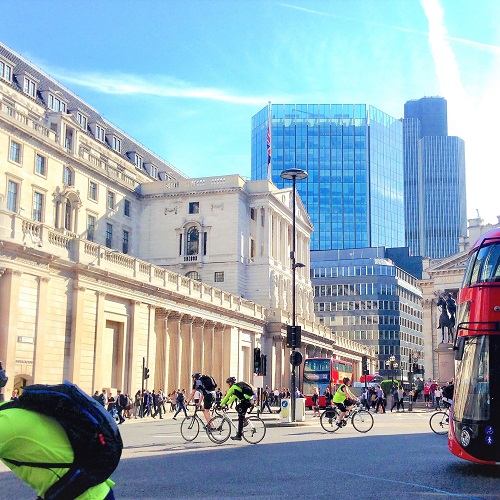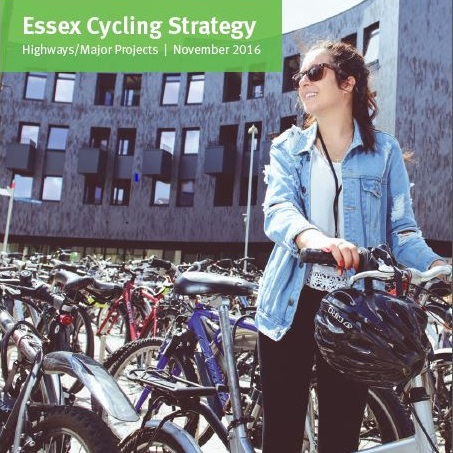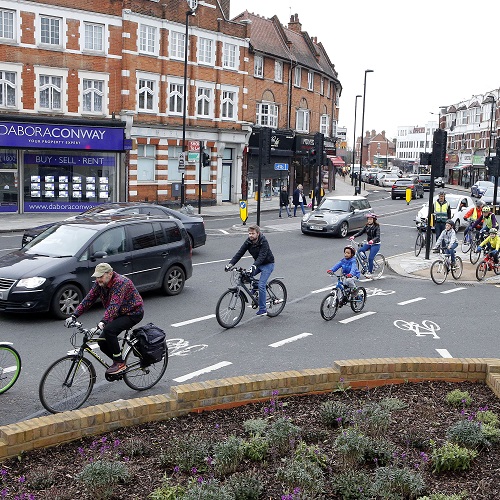


The objective of this assessment is to ensure that the needs of cyclists and pedestrians of all abilities are considered when temporary road layouts (roadworks) are designed.
Undertaking such an assessment in three tiers is presently being successfully trialled in a number of locations. This involves;
Judges Comments
The significant impact of highway and development works on people walking and cycling is often overlooked, particularly the barriers they cause for disabled people. TfL has developed a collaborative approach between councils, designers, contractors and users to assess and audit temporary changes to the road layout at works, including new sign designs. Regular “Roadwork Patrols” provide feedback and allow changes to be made which accommodate the needs of vulnerable road users at major sites such as Blackfriars Road. TfL has also used the process to develop innovative equipment such as temporary ramps to maintain cycling at openings.
Bank on Safety launched on 22 May 2017 on an experimental basis to tackle growing concern of the safety record of Bank junction. The scheme restricted vehicle access to only buses and pedal cycles crossing the junction, or accessing Cornhill in a westbound direction, weekdays between 7am-7pm.

Bank on Safety launched on 22 May 2017 on an experimental basis to tackle growing concern of the safety record of Bank junction. The scheme restricted vehicle access to only buses and pedal cycles crossing the junction, or accessing Cornhill in a westbound direction, weekdays between 7am-7pm.
This was the time period when 75% of the collisions were occurring at Bank, which had a high number of pedestrian and cycling casualties.
Prior to 22 May 2017 Bank Junction was:
The City’s most senior decision-making body voted to make the Bank on Safety scheme permanent in September 2018.
Safety was the critical factor in this scheme, provisional results indicated that a 27% reduction in casualties had been observed in the first 12 months of operation at the junction, but with a wider 26% reduction in the surrounding area in comparison to the previous five-year averages.
Judges Comments
The City’s experimental scheme to restrict traffic at the Bank junction to buses and cycles, using only signage and enforcement with minimal change of infrastructure, has been surprisingly successful. The peak hour flow of people cycling has increased 36%, and walking 25%.
This is only a start, with plans for substantial infrastructure change to further enhance the junction.
Essex Highways, a strategic partnership between Ringway Jacobs and Essex County Council, recognises the benefits in cycling. It is more than just a pastime for a dedicated few; it is a solution to the problem of congestion in our towns and poor health in our society.

Essex Highways, a strategic partnership between Ringway Jacobs and Essex County Council, recognises the benefits in cycling. It is more than just a pastime for a dedicated few; it is a solution to the problem of congestion in our towns and poor health in our society.
During the past two years, Essex Highways, has made significant improvements in best practice design, cycling initiatives and awareness, to encourage people to choose the most appropriate mode of transport for the journey they are making.
A key to the successful implementation of cycle infrastructure is to have a clearly defined ‘Pipeline to Delivery’ from strategic ambitions and governance, through network planning to best practice design and transformational funding. Essex Highways is now, though this submission, able to showcase this new and innovative approach which has resulted in the first Flagship cycle route in Essex.
Judges Comments
Essex Highways uses a “Pipeline to Delivery” for cycle infrastructure and a Cycling Strategy as a key to successful implementation through network planning to best practice design and transformational funding.
The project includes training engineers and designers in best practice cycle friendly design, and the “Pipeline to Delivery” has become a way to deliver high quality cycling infrastructure.
The vision of the Cycle Enfield programme is to create a network of safe cycle routes throughout the borough. The infrastructure consists of segregated lanes along busy principal roads, quiet-ways and complementary measures, creating a network of cycling routes, together with secure parking facilities and improved way-finder signage.

The vision of the Cycle Enfield programme is to create a network of safe cycle routes throughout the borough. The infrastructure consists of segregated lanes along busy principal roads, quiet-ways and complementary measures, creating a network of cycling routes, together with secure parking facilities and improved way-finder signage.
The project also includes maintenance pop-ups, guided rides, training, inclusive cycling activities and family bike rides. All of this encourages and supports people to take up cycling and brings about the desired modal shift, improving the health of Enfield’s residents and road users.
These major routes pass through diverse environments and have been designed and delivered by Ringway Jacobs for Enfield Council. To date, the partnership has delivered 17km of cycle lanes and associated improvements.
Extensive stakeholder engagement formed a significant element of the early design work and scheme development and this has continued throughout the implementation phase with a dedicated public liaison officer and communications team.
Value engineering and sustainable practices have been key elements of the design, with permeable drainage and rain gardens along the routes, together with innovative shared space bus-boarders and signalised crossings to ensure continuous cycle facilities integrate with other road users.
Judges Comments
Cycle Enfield is one of three ‘Mini Holland’ projects funded by TfL to kickstart major improvements to walking and cycling in outer London. In Enfield the approach was to reconnect the borough’s local areas which have become separated by main roads.
Sign up to the APM Newsletter.
